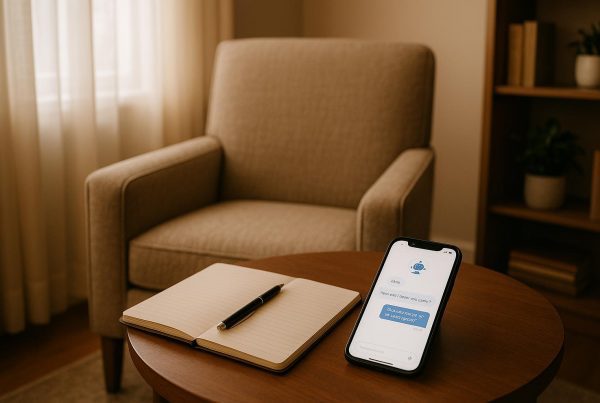Creating a workplace where employees feel psychologically safe and supported is one of the most critical aspects of modern business. In today’s demanding professional environment, fostering psychological safety and prioritizing employee well-being are not just HR strategies – they’re the foundations of sustainable success. Cassidy Matthews, an HR professional from Village Life, sheds light on how organizations can better support their workforce, sharing her expertise, challenges, and innovative solutions for improving workplace culture and mental health.
This article delves into Matthews’ insights, covering the importance of passion in HR, the nuances of psychological safety, and practical strategies for enhancing employee well-being.
Understanding Psychological Safety: Why It Matters
Psychological safety refers to an environment where employees feel comfortable being themselves, expressing concerns, and taking risks without fear of embarrassment, judgment, or retaliation. As Matthews points out, "Nothing is more important than someone’s psychological safety because, in that person’s mind, this could be the be-all and end-all of their life." This mindset underscores the responsibility of both HR practitioners and leadership in creating a culture where employees feel valued, seen, and heard.
The stigma around HR being viewed as a "hire and fire" department only amplifies this challenge. Employees may hesitate to share their struggles due to fears of being judged or misunderstood. To combat this, HR professionals must prioritize trust, attentiveness, and empathy, ensuring every interaction reinforces a sense of safety and support.
The Role of Passion and Presence in HR
One of the key takeaways from Matthews’ discussion is the significance of passion in HR. She emphasizes that being an HR professional isn’t merely about following procedures – it’s about genuinely caring for people. "Practicing HR can become mundane", she explains, "but if you’re not passionate about the outcome of helping people, you’re unlikely to find satisfaction in this role."
This passion also fuels the ability to be present for employees. Matthews calls for HR practitioners to engage intentionally, recognizing that even brief, meaningful interactions can profoundly impact an employee’s outlook. "A simple five minutes of being present and intentional could change that person’s perception or day", she notes.
Work-Life Balance vs. Life Integration
Matthews challenges the conventional idea of "work-life balance", suggesting instead that work is an integral part of life. Employees often fall into one of two traps: treating work as entirely separate from life, or blurring boundaries so much that work becomes their whole existence. Both approaches can lead to burnout or dissatisfaction. As Matthews puts it, "It’s about incorporating work as part of life, as opposed to having it be an aspect of, or the entirety of, your life."
To help employees navigate these boundaries, HR must guide them in finding the right balance and offer programs that support their holistic well-being.
Practical Strategies for Employee Well-Being
1. Intentional, Informed Initiatives
One of Matthews’ standout examples is her company’s Human Rights Day initiative. It involved creating an interactive video where staff shared their diverse perspectives on human rights. This project made employees feel seen and valued, even if their participation was brief. Matthews highlights that intentional efforts, even small ones, have a lasting impact when they are informed by employees’ lived experiences. "Making employees feel that they belong is far more meaningful than token gestures", she says.
2. Year-Round Support Programs
While special initiatives like Human Rights Day are impactful, Matthews stresses the importance of ongoing well-being programs. One example is her company’s staff kitchen initiative, which offers nutritious meals to employees at discounted rates. This not only removes the daily stress of planning meals but also ensures employees and their families receive healthy, affordable food. Such programs demonstrate care and meet employees where they are, addressing both physical and emotional needs.
3. Creating a Safe Space for Confidential Help
Matthews shares an innovative idea that could revolutionize workplace mental health support: a self-help booth. This booth would allow employees to anonymously connect with a qualified counselor or psychologist based on their specific needs, such as dealing with workplace stress, substance abuse, or personal challenges. By removing the stigma of seeking help and offering anonymity, such a solution fosters psychological safety and provides employees with a vital resource.
The Challenges of Building Trust
Building trust between employees and HR is an ongoing challenge, especially when employees perceive HR as aligned with leadership rather than their interests. Matthews emphasizes the importance of breaking this barrier by being approachable and demonstrating integrity. "You don’t know if someone walking into your office carries the stigma that HR isn’t trustworthy, or if they simply need a listening ear", she explains. HR practitioners must balance their legal and procedural responsibilities with genuine empathy and discretion.
Key Takeaways
- Psychological safety is essential: Employees must feel safe to express themselves without fear of judgment or consequences. This requires intentionality and empathy from HR and leadership.
- Passion fuels effectiveness: HR roles demand more than procedural expertise – they require a genuine love for helping people and the ability to be present during critical moments.
- Work-life integration is key: Instead of separating work from life, employees should be supported in finding a balance that makes work a fulfilling part of their life, not the entirety of it.
- Year-round initiatives matter: Programs like discounted staff meals or interactive projects foster connection and well-being, demonstrating care beyond one-off events.
- Confidential support options are critical: Innovative solutions like self-help booths can provide employees with accessible, judgment-free resources for mental health support.
- Build trust intentionally: HR professionals must work to overcome the stigma of being seen as "the hire and fire department" by demonstrating reliability, empathy, and discretion.
- Small interactions have big impacts: Even brief, intentional moments of presence can leave a lasting positive impression on employees.
Conclusion
As workplaces evolve, the importance of employee well-being and psychological safety has never been clearer. Cassidy Matthews’ insights remind us that HR isn’t just about policies or paperwork – it’s about people. By fostering trust, offering personalized support, and designing programs that resonate with employees’ real needs, organizations can create workplaces where people not only survive but thrive. This is the ultimate goal: a culture where employees feel valued, seen, and empowered to bring their full selves to work every day.
By integrating these strategies, businesses can transform their workplaces into safe, supportive environments that prioritize mental health and personal development, paving the way for long-term success for both individuals and organizations.
Source: "What Psychological Safety and employee wellbeing strategies work?" – Wellthy – Corporate Medical and Wellbeing Coaching, YouTube, Aug 4, 2025 – https://www.youtube.com/watch?v=o5sv4AETesE
Use: Embedded for reference. Brief quotes used for commentary/review.



